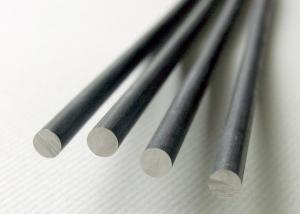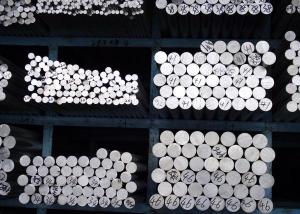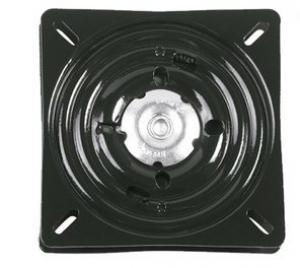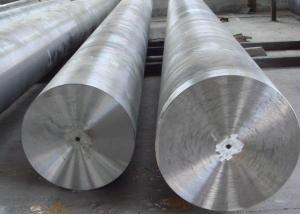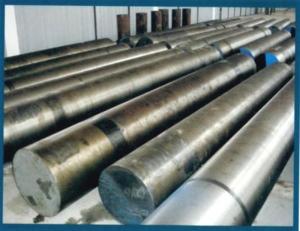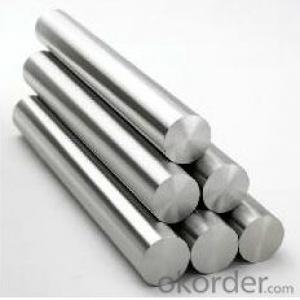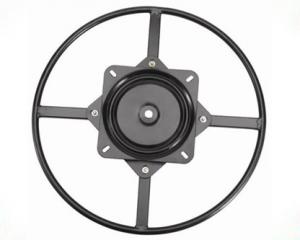Round Spring Steel
- Loading Port:
- China Main Port
- Payment Terms:
- TT or LC
- Min Order Qty:
- 50Tons m.t.
- Supply Capability:
- 600000TONS/YEAR m.t./month
OKorder Service Pledge
OKorder Financial Service
You Might Also Like
Spring Steel can be divided into two types. One is carbon spring steel, and other one is alloy spring steel.
Alloy spring steel is based on carbon spring steel, by adding one or more alloying elements to improve the mechanical properties, hardenability and other properties to meet the requirement for manufacture all kinds of spring steel.
Specification of Round Spring Steel:
-Material: 1065
-Standard: ASTM
-Production: Hot rolled or cold rolled
-Type: Spring Steel
Corresponding Steel Grade for Reference:
USA, ASTM | CHN, GB/T | JPN, JIS | ISO |
1065 | 65 | SWRH67A SWRH67B | Type SC Type DC |
FRA, NF | GBR, BS | ||
C66D | C66D |
Chemical Composition:
C | Mn | Ni | Si |
0.62~0.70 | 0.50~0.80 | ≤0.30 | 0.17~0.37 |
P | S | Cr | Cu |
≤0.035 | ≤0.035 | ≤0.25 | ≤0.25 |
Mechanical Properties:
-Tensile Strength σb (MPa): ≥695
-Yield Strength σs (MPa): ≥410
-Elongation δ10(%): ≥10
-Percentage reduction of area: ψ (%): ≥30
-Hardness HBS, no heat treatment: ≤255
Usage/Applications of Round Spring Steel:
-ASTM1065, is medium-high carbon spring steel. After heat treatment, this type of steel obtains high strength, hardness and elasticity but this material isn’t perfect for welding.
-Its fatigue strength is equal to alloy spring steel when they are in same configuration.
-For manufacturing spring, spring circle, all kinds of grommet, clutch, and axels in the production of normal machine.
Packaging & Delivery of Round Spring Steel:
-Packing Detail: The products can be packed in bundles by steel wires.
-Marks: There are two types of marks. One is color mark and other one is tag mark. We paint color marks on both ends of bundles to make sure that it’s more convenient for customers to distinguish their products from other products at the destination port. The tag marks will be tied up to each bundle to make sure that customers know the specifications of each bundle like product’s name and size and other information of products.
-Delivery Detail:
1, Delivery time: 30~45 working days after receive buyer’s T.T. or L/C.
2, Delivery status should be written in the contract. (Heat treatment or no)
Transportation:
1, The products can be delivered by bulk vessel or by container. As for container, products with the length of 6m will be loaded in 20’ container, with 9m or 12m, in 40’ container.
2, The maximum quantity of loading of container is 25 tons.
3, The products are usually transported to the nearest port from the production place.
Photos of Round Spring Steel:
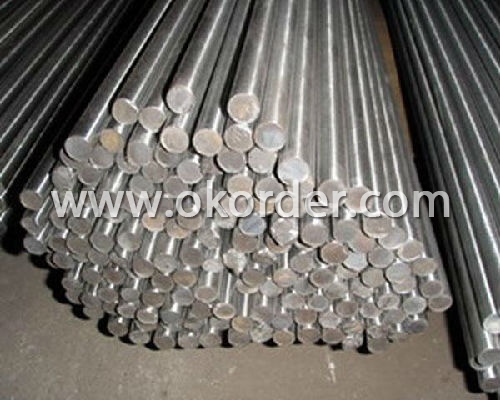
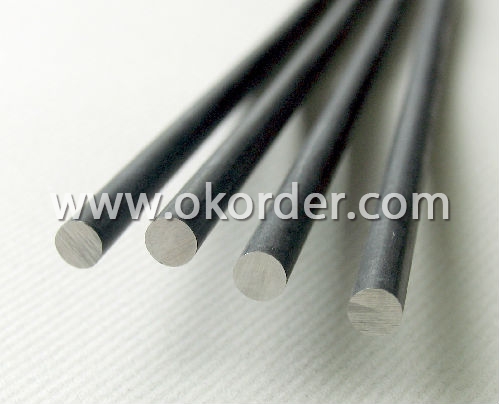
- Q:What are the different cryogenic grades of special steel?
- There are several cryogenic grades of special steel, including but not limited to, austenitic stainless steel (such as 304L and 316L), ferritic stainless steel (such as 410 and 430), and martensitic stainless steel (such as 440C). These grades are specifically designed to maintain their mechanical properties and resist brittleness at extremely low temperatures.
- Q:How is special steel tested for quality?
- Special steel is tested for quality through various methods such as chemical analysis, mechanical testing, and non-destructive testing. Chemical analysis involves examining the composition of the steel to ensure it meets the specified standards and requirements. Mechanical testing involves evaluating the steel's strength, hardness, and other mechanical properties. Non-destructive testing methods like ultrasonic testing or magnetic particle inspection are used to detect any internal defects or flaws in the steel without causing any damage. These rigorous testing procedures ensure that special steel meets the desired quality standards before it is used in various applications.
- Q:How does special steel perform in terms of thermal conductivity?
- Special steel typically has lower thermal conductivity compared to other materials like aluminum or copper. This means that it is not as efficient in conducting heat, but it can still be used in applications where high temperatures need to be controlled or insulated, such as in industrial furnaces or high-temperature equipment.
- Q:How is high-strength tool steel used in the production of heavy-duty tools?
- High-strength tool steel is used in the production of heavy-duty tools due to its exceptional hardness, toughness, and wear resistance properties. Its high strength allows heavy-duty tools to withstand intense forces and impacts without deforming or breaking. Additionally, the superior wear resistance of tool steel ensures that the tools retain their sharpness and cutting edge for extended periods, making them ideal for demanding applications such as machining, drilling, and shaping hard materials. Overall, the use of high-strength tool steel enhances the durability and performance of heavy-duty tools, enabling them to withstand rigorous use and provide reliable results.
- Q:How does corrosion-resistant steel protect against chemical attacks?
- Corrosion-resistant steel protects against chemical attacks by forming a protective oxide layer on its surface, which acts as a barrier against corrosive substances. This oxide layer is highly stable and prevents the steel from reacting with chemicals, thus preventing corrosion and degradation of the material.
- Q:What are the requirements for special steel used in high-pressure applications?
- The requirements for special steel used in high-pressure applications typically include high strength, excellent resistance to corrosion and oxidation, good weldability, and the ability to withstand extreme temperatures and pressures without deformation or failure. Additionally, the steel should have a high level of toughness to withstand impact and fatigue loads, as well as good dimensional stability to ensure proper sealing and performance in high-pressure environments.
- Q:What is the role of research and development in advancing special steel technology?
- Research and development (R&D) plays a crucial role in advancing special steel technology. Special steel refers to steel alloys that are specifically designed to possess enhanced properties such as high strength, corrosion resistance, heat resistance, or electrical conductivity. R&D activities are essential for pushing the boundaries of special steel technology and developing new and improved alloys. Through continuous research, scientists and engineers are able to explore new compositions, manufacturing processes, and heat treatment techniques to enhance the properties and performance of special steels. One of the primary roles of R&D in advancing special steel technology is the discovery and development of new alloy compositions. R&D teams analyze the properties of different elements and their interactions to design steel alloys with desired characteristics. This involves conducting experiments, testing various compositions, and optimizing the alloy to meet specific application requirements. By fine-tuning the composition, R&D helps in enhancing the strength, hardness, toughness, or other desirable properties of special steels. Furthermore, R&D also focuses on developing innovative manufacturing processes for special steel production. These processes involve advanced techniques such as vacuum melting, rapid solidification, or powder metallurgy to obtain a refined microstructure and improved mechanical properties. R&D teams work on optimizing these processes to enhance the overall quality, efficiency, and cost-effectiveness of special steel production. Another crucial role of R&D is the improvement of heat treatment techniques for special steels. Heat treatment is a critical step in the fabrication of special steels as it helps to achieve desired microstructures and properties. R&D endeavors to optimize the heat treatment parameters, such as temperature, time, and cooling rates, to enhance the mechanical properties and performance of special steels. In addition to alloy composition, manufacturing processes, and heat treatment, R&D also plays a vital role in developing new testing and characterization methods for special steels. This enables the evaluation and validation of the properties and performance of these steels under various conditions. Advanced testing techniques such as electron microscopy, X-ray diffraction, and mechanical testing are employed to assess the microstructural features, phase transformations, and mechanical behavior of special steels. Overall, research and development activities are indispensable for advancing special steel technology. Through continuous research, innovation, and optimization, R&D teams contribute to the development of new and improved alloys, manufacturing processes, heat treatment techniques, and testing methods, ultimately leading to the advancement of special steel technology and its applications in various industries such as automotive, aerospace, energy, and construction.
- Q:What are the main characteristics of corrosion-resistant castings?
- Corrosion-resistant castings are designed to withstand the damaging effects of corrosion, a natural process that deteriorates the surface of metals due to chemical reactions. These castings possess several main characteristics that make them resistant to corrosion. Firstly, corrosion-resistant castings are made from specific alloys or materials that are inherently resistant to corrosion. These materials may include stainless steel, nickel-based alloys, or high-performance alloys like Inconel or Hastelloy. These alloys contain elements such as chromium, molybdenum, or nickel that form a protective layer on the surface of the casting, preventing the corrosive agents from reaching the underlying metal. Secondly, these castings are produced using meticulous casting techniques that ensure a dense and defect-free structure. This is vital in preventing the penetration of corrosive substances into the casting. Techniques such as investment casting or vacuum casting are commonly employed to achieve a high level of precision and quality. Another important characteristic of corrosion-resistant castings is their ability to resist various types of corrosion, including general corrosion, pitting corrosion, crevice corrosion, and stress corrosion cracking. General corrosion refers to the gradual, uniform deterioration of the metal surface, while pitting corrosion creates localized holes or pits. Crevice corrosion occurs in confined spaces, such as gaps or joints, and stress corrosion cracking results from the combined effects of stress and a corrosive environment. Corrosion-resistant castings are designed to withstand all these corrosion types, ensuring long-term durability and reliability. Furthermore, corrosion-resistant castings often undergo additional surface treatments or coatings to enhance their resistance to corrosion. These treatments may include passivation, where the surface is chemically treated to form a protective oxide layer, or the application of protective coatings such as epoxy or polyurethane. These treatments provide an extra layer of defense against corrosive agents, extending the lifespan of the casting. In summary, the main characteristics of corrosion-resistant castings are the use of corrosion-resistant alloys, meticulous casting techniques, resistance to various types of corrosion, and the application of surface treatments or coatings. These characteristics ensure that these castings can withstand harsh environments and maintain their structural integrity over time, making them ideal for applications where corrosion is a significant concern.
- Q:How does special steel perform in high-vibration applications?
- Special steel is known for its excellent performance in high-vibration applications. Its unique composition and properties make it highly resistant to the effects of vibration, ensuring optimal performance and durability in such environments. One of the key features of special steel is its high tensile strength. This strength allows it to withstand the forces and stresses generated by vibration without undergoing deformation or failure. This property is vital in high-vibration applications, where constant movement and oscillation can subject materials to significant stress. Moreover, special steel exhibits exceptional fatigue strength, meaning it can endure repeated cycles of stress and vibration without compromising its structural integrity. This makes it ideal for applications that involve continuous or cyclic vibration, such as machinery, equipment, and structures subjected to dynamic loads. Additionally, special steel possesses excellent damping properties. Damping refers to the ability of a material to absorb and dissipate energy generated by vibrations. Special steel's superior damping characteristics help reduce the magnitude and duration of vibrations, minimizing the impact on the surrounding components and structures. This contributes to overall system stability and reduces the risk of fatigue or premature failure. Furthermore, special steel is often engineered to have high resistance to corrosion and wear. This resistance ensures that the material remains robust and reliable even in harsh environments where vibration-induced corrosion or erosion may occur. By maintaining its protective coating and integrity, special steel can effectively withstand the challenges posed by high-vibration applications. In summary, special steel performs exceptionally well in high-vibration applications due to its high tensile strength, fatigue resistance, damping properties, and corrosion/wear resistance. Its combination of these properties ensures optimal performance, longevity, and safety in environments characterized by significant vibration and dynamic loads.
- Q:What are the different mining grades of special steel?
- Special steel refers to steel alloys that are specifically engineered for applications that require exceptional strength, durability, corrosion resistance, or other unique properties. The mining industry relies heavily on special steel for various components, tools, and equipment used in mining operations. There are several different mining grades of special steel, each with its own specific properties and characteristics. These grades are typically categorized based on their chemical composition, mechanical properties, and intended use in mining applications. Some common mining grades of special steel include: 1. High-strength Low Alloy (HSLA) Steel: HSLA steel is known for its superior strength and toughness, making it ideal for heavy-duty mining equipment and machinery. It offers excellent weldability and corrosion resistance, making it suitable for harsh mining environments. 2. Stainless Steel: Stainless steel is widely used in mining due to its excellent corrosion resistance and ability to withstand high temperatures. It is commonly used in mining equipment such as pipes, fittings, and tanks where resistance to corrosion and abrasion is essential. 3. Tool Steel: Tool steel is specifically designed for use in cutting, drilling, and shaping tools used in mining operations. It offers high hardness, wear resistance, and toughness, making it suitable for demanding applications such as drilling bits, hammers, and cutting tools. 4. Wear-resistant Steel: Wear-resistant steel is engineered to withstand abrasive conditions and reduce wear and tear in mining equipment. It is commonly used in mining buckets, conveyor belts, and crushers to prolong their service life and minimize maintenance. 5. Heat-resistant Steel: Heat-resistant steel is essential for mining applications that involve high temperatures, such as smelting and refining processes. It retains its strength and structural integrity even at elevated temperatures, reducing the risk of equipment failure and ensuring operational efficiency. 6. Corrosion-resistant Steel: Corrosion-resistant steel is used extensively in mining operations where exposure to corrosive substances, such as acids or seawater, is common. It prevents rusting and degradation, prolonging the lifespan of mining equipment and structures. It is important to note that the specific mining grades of special steel may vary depending on the manufacturer and the intended use. To ensure the best performance and suitability for mining applications, it is recommended to consult with steel manufacturers or industry experts who can provide guidance on selecting the appropriate grade for specific mining requirements.
1. Manufacturer Overview |
|
|---|---|
| Location | Jiangsu, China |
| Year Established | 2003 |
| Annual Output Value | Above US$ 30 Million |
| Main Markets | Asia-Pacific; Middle east |
| Company Certifications | |
2. Manufacturer Certificates |
|
|---|---|
| a) Certification Name | |
| Range | |
| Reference | |
| Validity Period | |
3. Manufacturer Capability |
|
|---|---|
| a)Trade Capacity | |
| Nearest Port | Shanghai. |
| Export Percentage | 20% - 30% |
| No.of Employees in Trade Department | 10-20 People |
| Language Spoken: | English; Chinese |
| b)Factory Information | |
| Factory Size: | Above 100,000 square meters |
| No. of Production Lines | 2 |
| Contract Manufacturing | OEM Service Offered; |
| Product Price Range | Average |
Send your message to us
Round Spring Steel
- Loading Port:
- China Main Port
- Payment Terms:
- TT or LC
- Min Order Qty:
- 50Tons m.t.
- Supply Capability:
- 600000TONS/YEAR m.t./month
OKorder Service Pledge
OKorder Financial Service
Similar products
New products
Hot products
Hot Searches
Related keywords
